What Are the Sundarbans?
Written by Sthitee Mohanty, senior writer.
The Sundarbans explained simply
Written by Sthitee Mohanty, senior writer.
The Sundarbans are a large area of interconnected water bodies, mangrove forests, swamps and low-lying islands in West Bengal and Bangladesh.
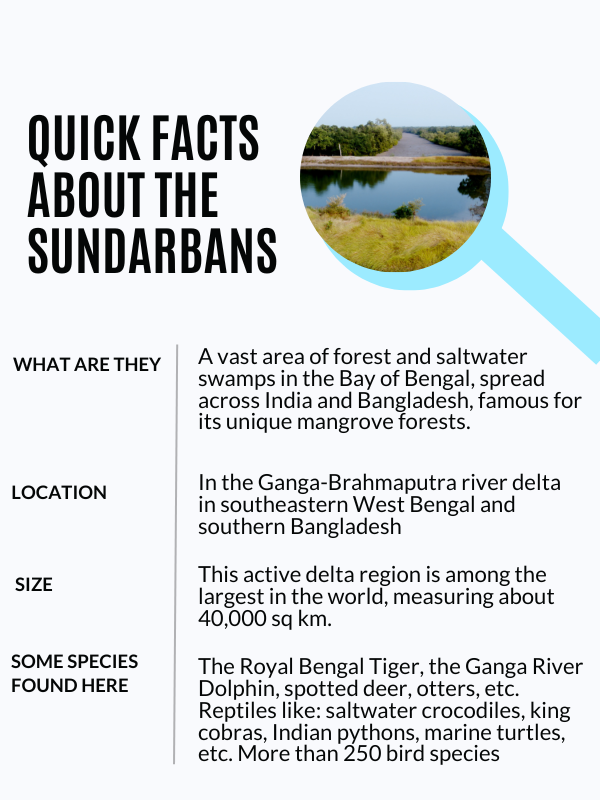
What you need to know is that Sundarbans is the name given to the entire area, most of which is taken up by the Sundarbans forests and swamps. These are, what are called, mangrove forests.
The rivers feeding the forests include the Ganga river (called Padma river in Bangladesh) and the Brahmaputra river.
The total region is almost 40,000 square kilometers in area, three-fifths of which are in Bangladesh. The rest of the region is in West Bengal, India.
Though the region is present in two countries, both governments try their best to work together to preserve this wonder of nature. It is collectively known as the Sundarbans Reserve Forest.
How the Sundarbans were named

There are mangrove trees in this region called sundari trees – these trees have a large population in the Sundarbans, thus giving the region its name.
The word Sundarbans itself means “beautiful forest”.
How were the Sundarbans formed?

The Sundarbans have a varied terrain, formed by the deposition of sediments by two sources – the rivers and the oceans.
The rivers Padma and Brahmaputra have been depositing silt (fine sediment material), clay, sand, small rocks, etc in this region, creating the Sundarbans.
These forests have also been shaped by the tidal action of the seas. The tides of the sea influence the water levels here as well.
The biodiversity of the Sundarbans

The Sundarbans have always been in the limelight as the home of the Royal Bengal Tiger. Did you know that it is also the world’s largest tidal forest?!(tidal forests grow in river deltas)
The Sundarbans have a rich biodiversity because they are a variety of islands grouped together as one region. Islands closer to the rivers have characteristics of freshwater habitats. Islands closer to the sea has characteristics of saltwater habitats.
What is an estuary?
An estuary is a geographical region where a freshwater body meets a saltwater body. It contains brackish water, a mix of salt and fresh water.
Yes, the Sundarbans ecosystem is estuarine in nature!
The mangrove swamps thrive in salty water with special adaptations that make life easier for them. Salt water-tolerant species are dominant in this region.
How does a mangrove adapt to salt water?
- Mangroves can filter out saltwater through their roots
- They have structures called pneumatophores or air roots that help them breathe through the wet, swampy soil – these aerial roots rise above the ground allowing for gaseous exchange of air.
- They can store salt in their leaves or excrete salt through glands in their leaves
Many of the faunal species in the Sundarbans are endangered. It is a sensitive area with a large number of ongoing conservation efforts.
Species in the Sundarbans

The area is home to species like:
The Royal Bengal Tiger
The Ganga River Dolphin
Spotted deer, otters, wildcats
Reptiles like: saltwater crocodiles, king cobras, Indian pythons, sea turtles, etc.
There are more than 250 bird species here – from sea eagles to storks.
Sundarban species no longer found there
- Javan Rhino
- Water Buffalo
- Barking Deer
Endangered species in the Sundarbans
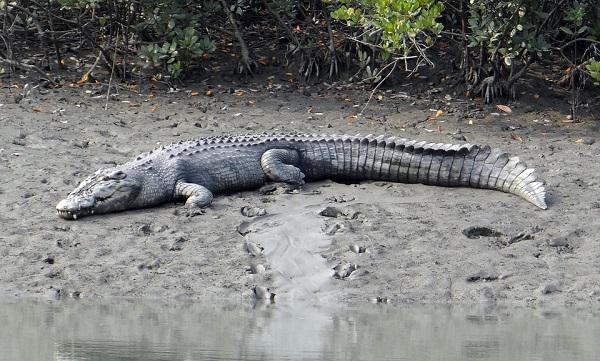
- Royal Bengal Tiger
- Ganga River Dolphin
- Saltwater Crocodiles
- River Terrapin (a rare freshwater turtle)
Status of the Sundarbans
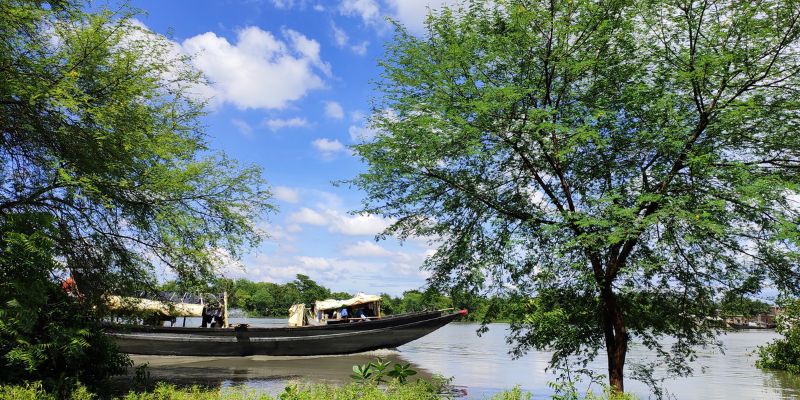
UNESCO designated the entire Sundarbans as a World Heritage Site in 1997. It became a Ramsar Site in 2019 (Ramsar are wetland sites on international importance).
Both have been significant in stepping up conservation efforts in the region.
India established the Sundarbans National Park in 1984, having declared the region a Tiger Reserve in 1973.
Bangladesh has divided the Sundarbans into three wildlife sanctuaries – Sundarbans West, Sundarbans South, and Sundarbans East.
The entire region is now a UNESCO termed biosphere reserve and is now a biodiversity hotspot in India.
What laws protect the Sundarbans in India?
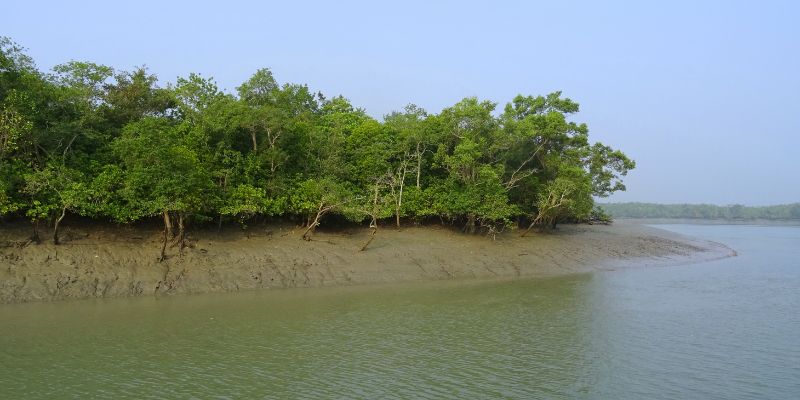
- The India Forest Act, 1972
- The Wildlife (Protection) Act, 1972
- The Forest Conservation Act, 1980
- The Environment Protection Act, 1986
- The Biological Diversity Act, 2002
Five Fun Facts about the Sundarbans
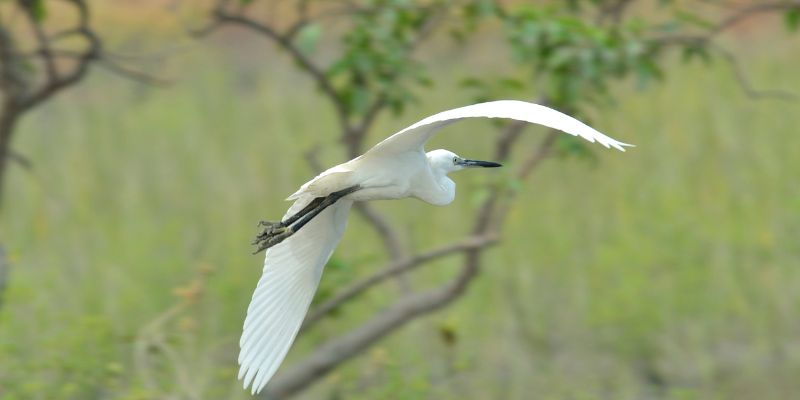
1. The Sundarbans are easily navigated by boats and ferries. The ecosystem is so well connected by rivers and streams that each part can be reached by boat.
2. The fishermen need permission from forest rangers to fish in these waters.
3. There is an entire village where women who have lost their husbands to tiger attacks live – it is called the Tiger Widow Village. These women now protect the Sundarbans.
4. Gosaba is the largest human inhabited area in the Sundarbans and is the last inhabited area before the deep forests begin.
5. Many authors have based their stories in the Sundarbans, including Amitav Ghosh in his book The Hungry Tide.
Why are the Sundarbans important?

The ecological processes in Sundarbans are very important to scientific research. The development of life on a mangrove forest in a river delta gives a large amount of information to scientists on processes like delta flooding, tidal influence, mangrove plant adaptation, etc.
It is home to certain globally endangered species that are found nowhere else in the world. It is the only remaining habitat for many fauna and flora in the lower Bengal delta. Also, the Sundarbans is the only mangrove tiger habitat.
The Sundarbans also protect West Bengal from intense flooding by the sea.
Threats the Sundarbans face
- Rapid Climate Change
- Reduced Freshwater Supply Due to Increased Irrigation Demands
- Natural disasters like Cyclones
- Coastline erosion by tidal waves
- Human Wildlife Conflict
Current conservation efforts
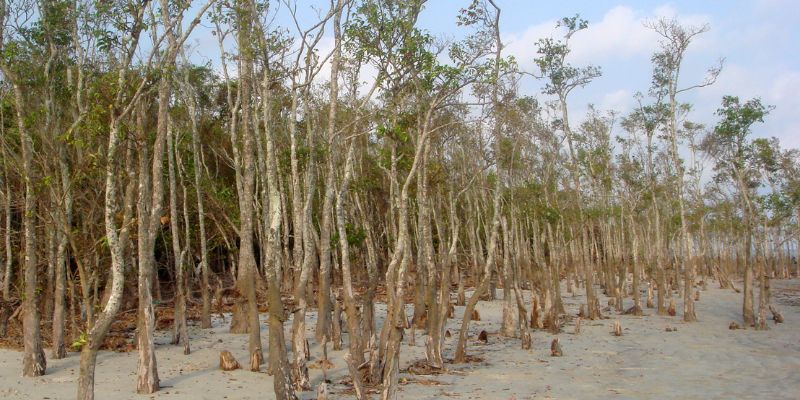
Organizations like the World Wildlife Fund and Discovery India work consistently towards its conservation.
Project Tiger also protects the Sundarbans tiger population.
Also, the Sundarbans have been divided into zones in order to protect the most vulnerable areas: the core zone is innermost zone where humans are not allowed entry; the buffer zone is where the native inhabitants reside.
Community programs like the Joint Mangrove Management program also help in conservation efforts.
The International Union for Conservation of Nature (IUCN) – an international organization that works to conserve nature – has termed the Sundarbans as an ‘endangered’ ecosystem.
What else can be done to save the Sundarbans? Let us know!

Better Your Child’s G.K. In 3 Minutes – Get This Free Newsletter
Get fun facts, simple and easy news, quizzes, and lots of other interesting things to read in your mailbox – for free! It’s what we call GK-on-the-go!
I Kid You Not now has a large readership across India and also parts of the world. If you want to write for us, you can submit your story here. You can also apply to become a news anchor. Apply here



Comments